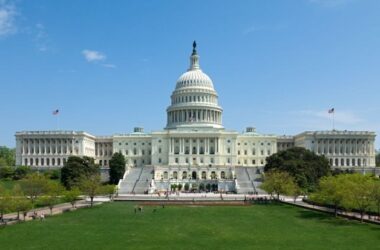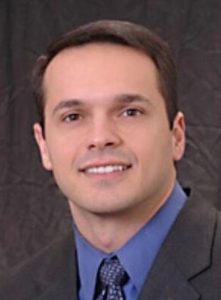By Autumn Shelton, West Virginia Press Association
CHARLESTON, W.Va. – Members of the West Virginia Legislature’s Joint Commission on Economic Development were asked during their interim meeting on Tuesday to consider funding the state’s Build Ready Site Program.
“I know everyone comes to you asking for money,” said Vic Sprouse, infrastructure coordinator and federal funds and grant director for the Department of Economic Development, as he began his presentation. “Everyone’s wanting all the dollars to come in their direction.”
However, he said there “is very little you can do from a future perspective than provide sites to attract these companies, like Nucor and like Berkshire, to our state. And we are on a roll.”
He explained that the program, which was created to increase economic development opportunities, has given leaders better insight into business recruitment strategies. As a result, he said funding would be beneficial in two separate areas.
The first area he discussed is the micro-grant program, established during the 2022 Legislative Session through House Bill 4002.
Sprouse said if the legislature were to allocate an estimated $8-10 million into a micro-grant fund, it would allow the Department of Economic Development to provide grants to counties through local economic development offices. These grants would then give the state’s smaller communities the opportunity to have much needed matching funds for the development of “business parks” or to redevelop certain areas.
Should this funding occur, Sprouse said that county officials would be given all the necessary information to better understand how the grant program would work and how to attract jobs.
The second area Sprouse discussed is the need for funding to develop larger sites, complete with basic infrastructure, that would attract “mega-companies,” like the state has already witnessed with the arrival of Nucor, GreenPower, Pure Watercraft and others.
“There’s things brewing right now that you will probably hear about in the next few days of other companies wanting to come to this state,” Sprouse said, noting that every time a company makes the decision to locate in West Virginia, it creates additional interest from others who can “draw in more dollars and jobs to our state.”
Also, he explained that the utilization of site selection groups, which evaluate sites throughout various states, is a common practice used by companies when they wish to locate in a certain area.
“Where we have struggled is, we oftentimes didn’t have that basic information on our sites to be able to provide to the site selectors so they could give that information to companies,” Sprouse noted. He said that a plan is needed to identify the state’s top sites and fund their development in order to compete with surrounding states.
“I feel like that type of an approach will help us compete,” Sprouse said. “In some cases we are not going to be able to compete because we just don’t have a 3,000 acre site that’s flat. But, in most cases, at least from what I have seen in my time at the economic development department, a lot of times it’s a 200-acre site or a 150-acre site or a 250-acre site, and these are fantastic worldwide companies that we can attract here.”
In response to questioning about bipartisan federal infrastructure plan funding and improving coal-mining related areas, Sprouse stated that he meets every week with the Governor’s office and other stakeholders to “make sure that we don’t miss out on any of those federal dollars that are coming down and to make sure that we work across agencies to do that.”
Sprouse added that his department uses GIS mapping and drone footage of sites so companies can “really see” what the state has to offer.
Although Sprouse didn’t have an exact number on how much funding is needed for larger area site development, he said that surrounding states have received legislative funding anywhere from $50-250 million a year over a certain time period. He stated that he would leave the ultimate funding request up to Economic Development Secretary Mitch Carmichael.
“Again, I don’t think there is anything more critical for the legislature this year than taking a look at the future and making sure that we take the right steps down the road on this particular program,” Sprouse said. “It was great insight last year to pass the bill. We just kind of need to get that funded, and make sure to keep in mind that those are two separate fundings whenever we talk about local versus when we talk about going out and competing against the major economic development states in the country.”






